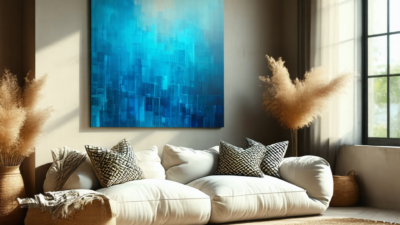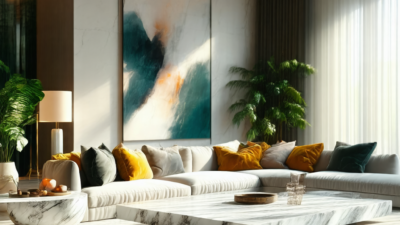Introduction to Minimalist Interior Design
In 2025, minimalist interior design continues to dominate as one of the most sought-after styles. It’s not just about having less; it’s about creating a space that feels serene, functional, and full of purpose. This approach emphasizes clean lines, neutral palettes, and intentional placement of objects. But how do you achieve this look without making your home feel sterile? Let’s dive into the key principles, common pitfalls to avoid, and practical tips for mastering minimalist design.
Key Principles of Minimalist Interior Design
To create a truly minimalist space, start by stripping away unnecessary elements. This doesn’t mean your home has to be barren—quite the opposite. Instead, focus on functionality and simplicity. Here are some core principles:
- Functionality over form: Every piece of furniture or decor should serve a purpose.
- Neutral color palette: Stick to whites, grays, and muted tones as your base, allowing pops of color through accessories.
- Simplicity in lines: Choose furniture with clean, geometric shapes to avoid cluttering the space visually.
- Minimal decor: Less is more. Opt for a few well-chosen items rather than an abundance of smaller pieces.
For inspiration, consider visiting spaces like those featured on Dezeen, where modern minimalist designs are showcased regularly.
Common Mistakes to Avoid in Minimalist Design
While the concept of minimalism seems straightforward, it’s easy to fall into traps that hinder its effectiveness. Here are some mistakes to watch out for:
- Overdecorating: Too many decorative elements can clutter a space, defeating the minimalist purpose.
- Ignoring texture: A lack of texture can make a room feel cold and uninspired. Incorporate materials like wool, linen, or natural wood to add depth without adding visual noise.
- Forgetting about lighting: Proper lighting is crucial in minimalist design. Use layered lighting to create ambiance and highlight key features.
- Not decluttering enough: Minimalism requires ruthless editing. If an item doesn’t serve a clear purpose, it should be removed.
For more insights, check out articles on Architectural Digest, which often explores minimalist living spaces in detail.
How to Achieve Balance in Minimalist Design
One of the greatest challenges in minimalist design is achieving balance. A space that’s too sparse can feel empty, while one that’s overly cluttered misses the mark entirely. Here are some tips for striking the right balance:
- Incorporate statement pieces: Use a bold piece of furniture or artwork to anchor the room without overwhelming it.
- Use open shelving wisely: Open shelves can add functionality without contributing to clutter if used sparingly and kept tidy.
- Add greenery: Plants are a great way to introduce life into a space without adding visual chaos. Opt for low-maintenance options like succulents or air plants.
- Emphasize storage solutions: Hidden storage is key in minimalist design. Use built-in cabinets, under-bed drawers, or sleek containers to keep clutter at bay.
For more practical tips and real-life examples, explore the minimalist living spaces featured on Style by Emilie.
Tips for Implementing Minimalist Design in Your Home
Ready to embrace minimalism but not sure where to start? Here are some actionable tips:
- Start small: Begin with one room or even a corner of your home. Gradually work your way through the space as you become more comfortable with the style.
- Edit ruthlessly: Go through your belongings and ask yourself, “Does this serve a purpose?” If not, consider donating or discarding it.
- Invest in quality pieces: When choosing furniture or decor, opt for timeless, high-quality items that will stand the test of time.
- Keep surfaces clear: Maintain a clutter-free environment by designating specific spots for keys, wallets, and other everyday items.
For additional guidance, check out minimalist design guides on Apartment Therapy.
Conclusion
Minimalist interior design is more than just a trend; it’s a lifestyle choice that prioritizes simplicity and functionality. By focusing on key principles, avoiding common pitfalls, and implementing practical tips, you can create a space that feels both serene and inviting. Remember, the goal is to create a home that reflects your personal style while providing a peaceful retreat from the chaos of daily life.
For more inspiration and expert advice, explore minimalist design resources on Houzz. Happy designing!





